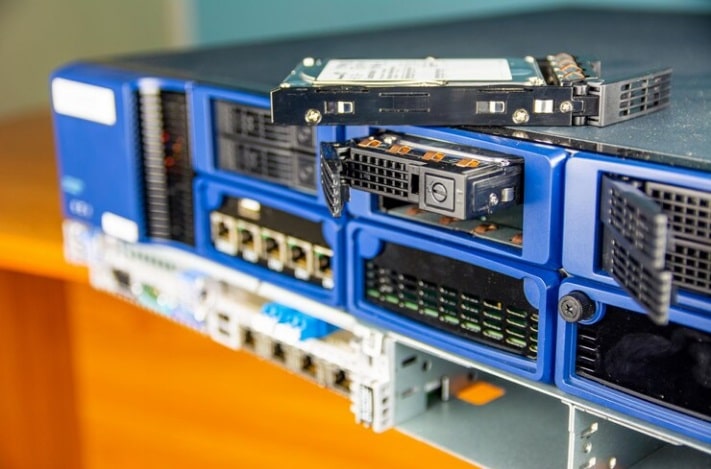“Tape used to have a reputation for being unreliable but this is no longer true,” he adds. “It is reliable, it is inexpensive, and you can get between 3 and 8 terabytes of data in a single cartridge.”
Conventional disks can also be used for long term storage, although they are susceptible to mechanical failure and data decay or bit rot, and can be costly to run if kept in a spun-up state. But while hard drives will always have a high failure rate, their storage densities and energy consumption figures are improving all the time. “There is a lot of R&D going on in the hard drive business – particularly on the capacity side,” says Peters.
Recent innovations include helium filled drives, which consume far less energy than drives filled with relatively denser air and which can also store 50% more data per enclosure than conventional drives. HGST’s Ultrastar He6 drives run 4-5 degrees cooler than air filled drives, and because there is less drag in helium than in air they consume 23% less power, resulting in a 49% improvement in power consumption per terabyte of storage, the company claims.
There have also been innovations in the way that data is written to drives, including Shingled Magnetic Recording (SMR) drives which manufacturers, including Western Digital and Seagate, already have in production. These use relatively wide data tracks that are written to disk in such a way that they partially overlap previous ones, in a manner similar to the way that roof shingles are laid down. (Normally there is a small gap between tracks.)
SMR is particularly suited to continuous writing or erasing rather than small random access reads and writes, making it well suited to archiving data. SMR is expected to enable data densities of as much as three trillion bits per square inch, according to Seagate.
Further out it’s likely that another way of laying down data called Heat-assisted magnetic recording (HAMR) will be adopted. HAMR records data on high stability magnetic media such as iron-platinum alloy using laser thermal assistance to heat the material. HAMR allows much higher areal densities than conventional or SMR disks, and Seagate, Western Digital and TDK have all demonstrated the technology although no HAMR disks are available yet. Seagate predicts that by 2020 it will be able to offer conventional 3.5″ drives with a capacity of 20TB or more using HAMR.
The benefit of these technologies is that by increasing areal density they have the potential to change the economics of disk drives. Even if the price per gigabyte is still relatively high, such drives can or will be able to store large amounts of data using comparatively little rack space, and if kept spun down then they consume no energy. Although a large array of these disks may take several minutes to spin up, once running they offer fast access to any cold storage data using a technology that is well understood.
One further option is to use cloud services for cold storage – a market pioneered by Amazon with its Glacier storage service. Glacier is certainly cheap: from 1c per gigabyte per month, but its name – as well as hinting that it is aimed at the cold storage market – also intimates that it is slow. Once data is requested, in what Amazon calls initiating a retrieval job, it typically takes between 3 and 5 hours before it is available for download.
What the underlying storage for Glacier is a mystery that Amazon hasn’t revealed, Mark Peters suspects that the service may be tape-based. “Why the 3-5 hour delay? It may be that the system is not completely automated, and there are tape monkeys running around grabbing tapes of shelves. On the other hand, making customers wait may be a deliberate move.”
Whatever the reason, it has given Seagate’s EVault an opportunity to offer an alternative cloud-based cold storage service that it calls LTS2, or Long Term Storage Service. LTS2 is slightly more expensive than Glacier at 1.5c per gigabyte per month, but data is available for retrieval in a matter of seconds. The service uses spinning disk drives for storage, and there is some speculation that it actually uses Seagate’s own SMR drives, though this has not been confirmed.
So when it comes to the future of cold storage, there’s certainly no shortage of options: low quality flash; tape; helium, SMR and HAMR disks; tape/disk hybrids; and cloud-based cold storage services of differing speeds.
Each has its own distinct speed, power and space characteristics and cost per gigabyte, and that means there may be demand for them all. For the type of cold storage of relatively small files that Facebook has in mind, there may even be a place for Blu-ray based storage as well.






